The 16-year-old bike that's just won the Men's British National Hill Climb championships
Rim brakes, no paint, tiny seat stays and a decade-old groupset are still plenty fast enough to help champion Harry Macfarlane see off some serious competition
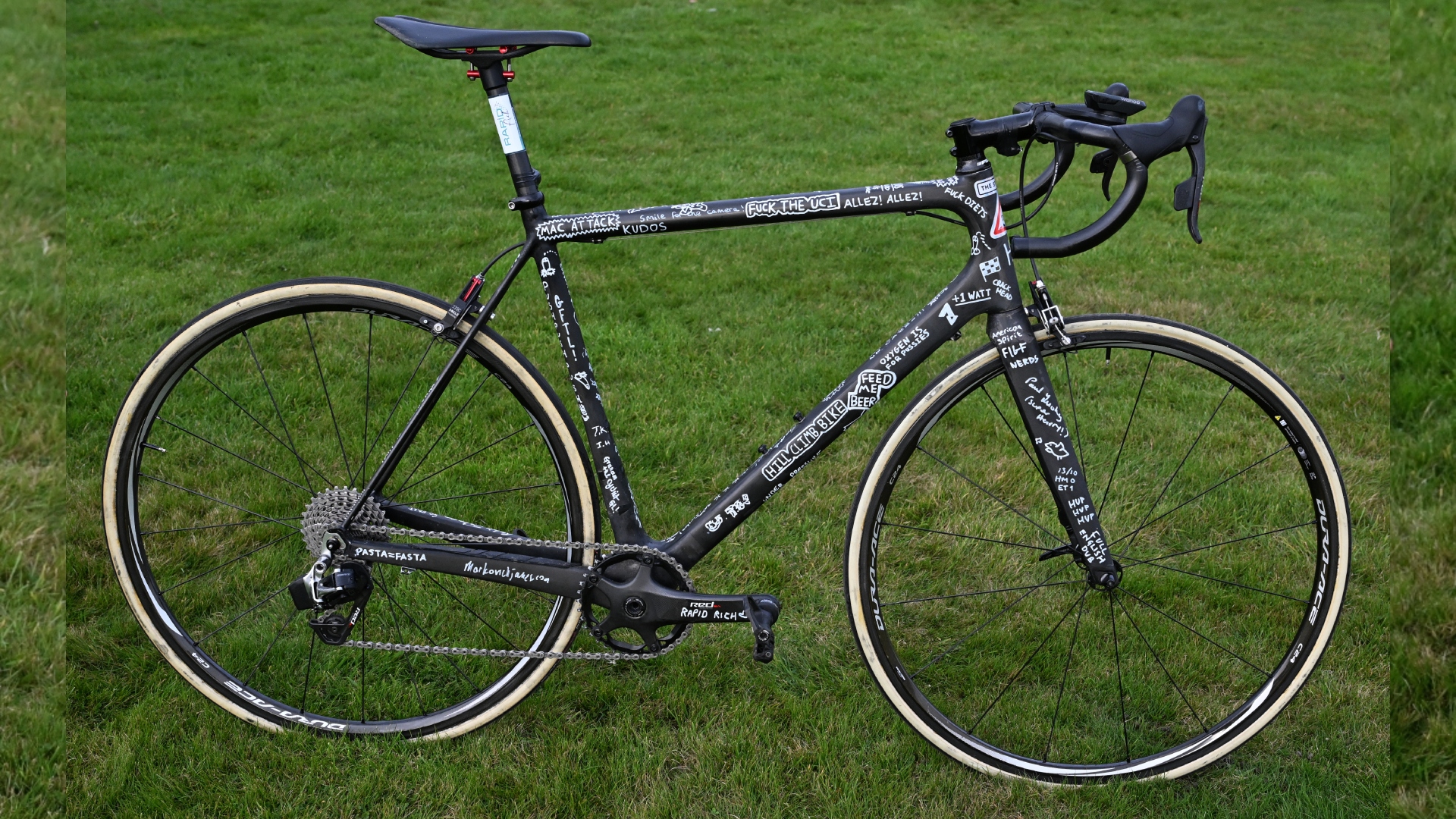

This weekend, the British Hill Climb season came to a climax at the 2024 National Hill Climb.
Harry Macfarlane of TAAP Kalas was victorious on the Dipton Mill Road climb, beating three-time National Champion Andrew Feather by just 2.3 seconds - and as you might expect, he didn't win the National Hill Climb on a standard bike.
Illi Gardner (Cardiff Ajax CC) won the women's race, for the third consecutive year.
Free from any UCI regulations, the world of hill climbing — a discipline whereby riders race, against the clock, from the bottom to the top of a hill — opens the door to all sorts of customizations, and it's fair to say Macfarlane's bike is about as custom as they come.
Ultra-light wheels, stripped-back paint, and custom-made bike lights are just a few of the modifications Macfarlane used to achieve such a lightweight build. Let's take a look at the custom climbing machine in detail.
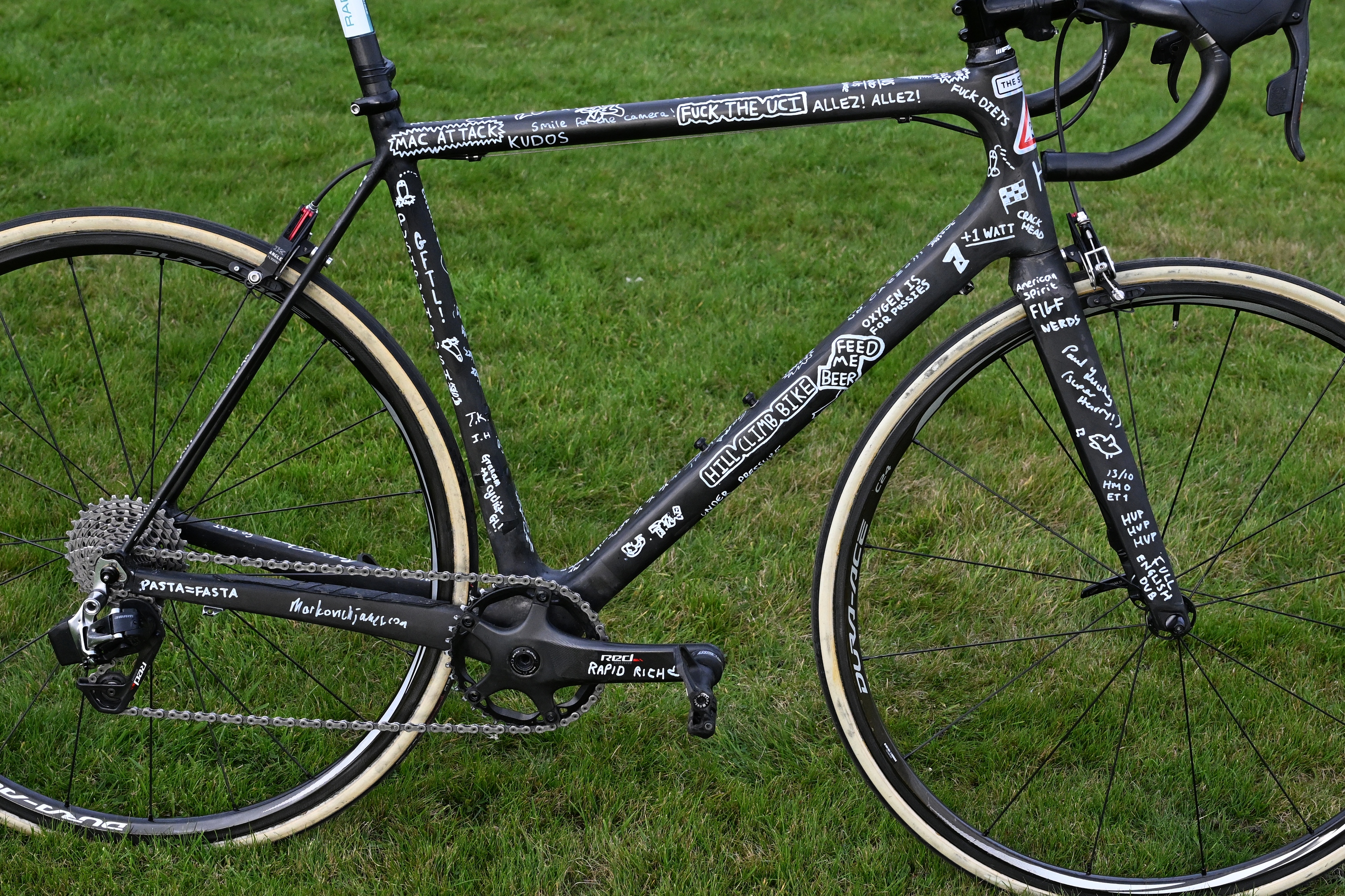
The frameset is old, but certainly unique
The bike is built around a 2008 Cervelo RS frameset (yep, that link is from the archives!) which Harry bought already stripped back to a raw carbon fibre finish. This is, of course, rather an extreme measure for many, but in hill climbing such modifications are almost a right of passage for those at the top of the game. Paint on bikes can be heavy, and this modification can save as much as around 170 grams, depending on the exact frame size and paint application.
The Cervelo is, of course, a rim brake frameset. Hill climbing is pretty much the only discipline in bike racing where rim brakes still rule the roost, and it mostly comes down to cost. The hill climb scene is still dominated by DIY builds, and because riders generally only use the bikes for around two months of the year, it makes sense to keep costs down. Of course, you can build a 5.5kg disc brake hill climb bike if you have the cash, but for many rim brake frames prove to be a far more wallet-friendly option for ultralight builds.
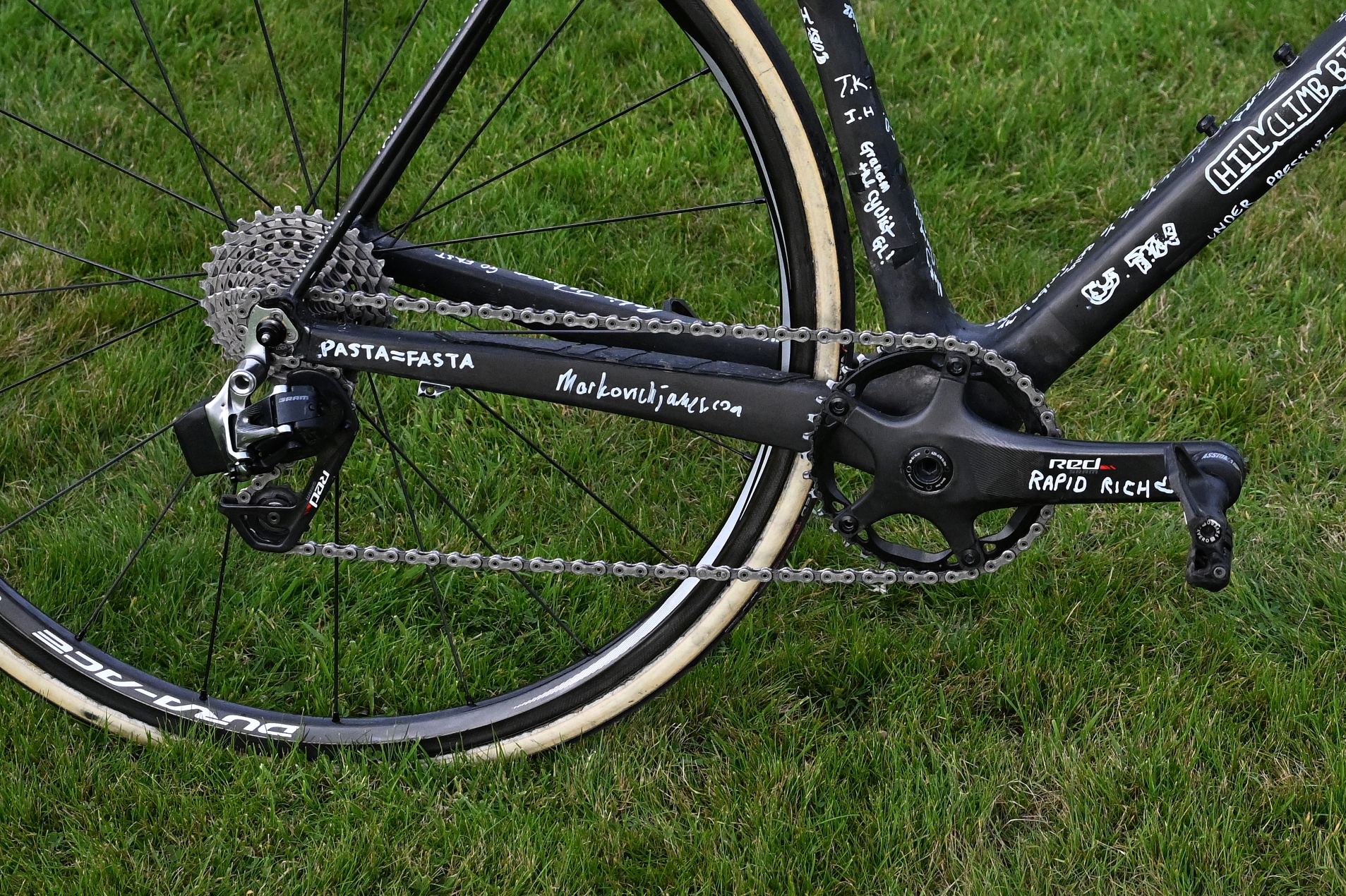
The Sram Red eTap groupset is hardly new either, but it's still ultra-lightweight
Similarly, Harry Macfarlane's groupset features some rather outdated kit, but that doesn't mean it's heavier.
Shifting duties are handled by a first-generation Sram Red eTap rim brake groupset, that has been set up as a one-by system, due to the specific demands of the climb. This year's test was just 1.1km long with an average gradient of 10%, meaning a modest 38t front chainring was sufficient for Macfarlane.
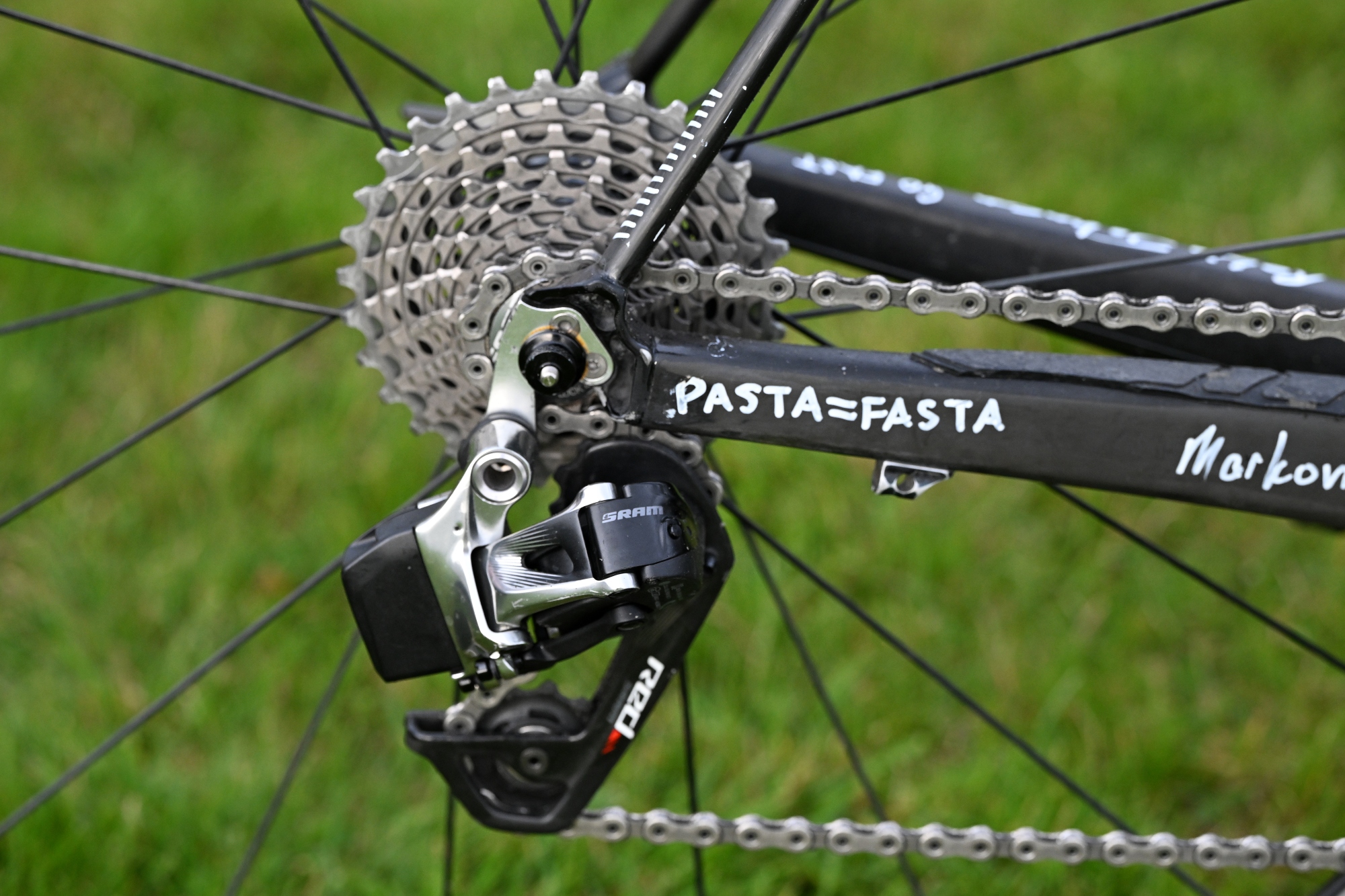
Pasta = Fasta - it certainly seems to have worked for Harry
Macfarlane paired this with a relatively standard Sram Red 11-28 cassette to tackle the maximum pitches of over 14%. Though the Sram Red eTap groupset was first released back in the summer of 2015, it remains a firm favourite among the hill climbing community for two reasons.
The first, of course, is weight. The groupset, in a two-by setup, comes in at 1,970g, which is nearly half a kilo lighter than the current generation groupset thanks to a lack of disc rotors and only having 11 rear sprockets. The second reason is simplicity - with just two brake cables to worry about, the decade-old groupset is particularly easy to tinker with, something hill climbers can't get enough of.
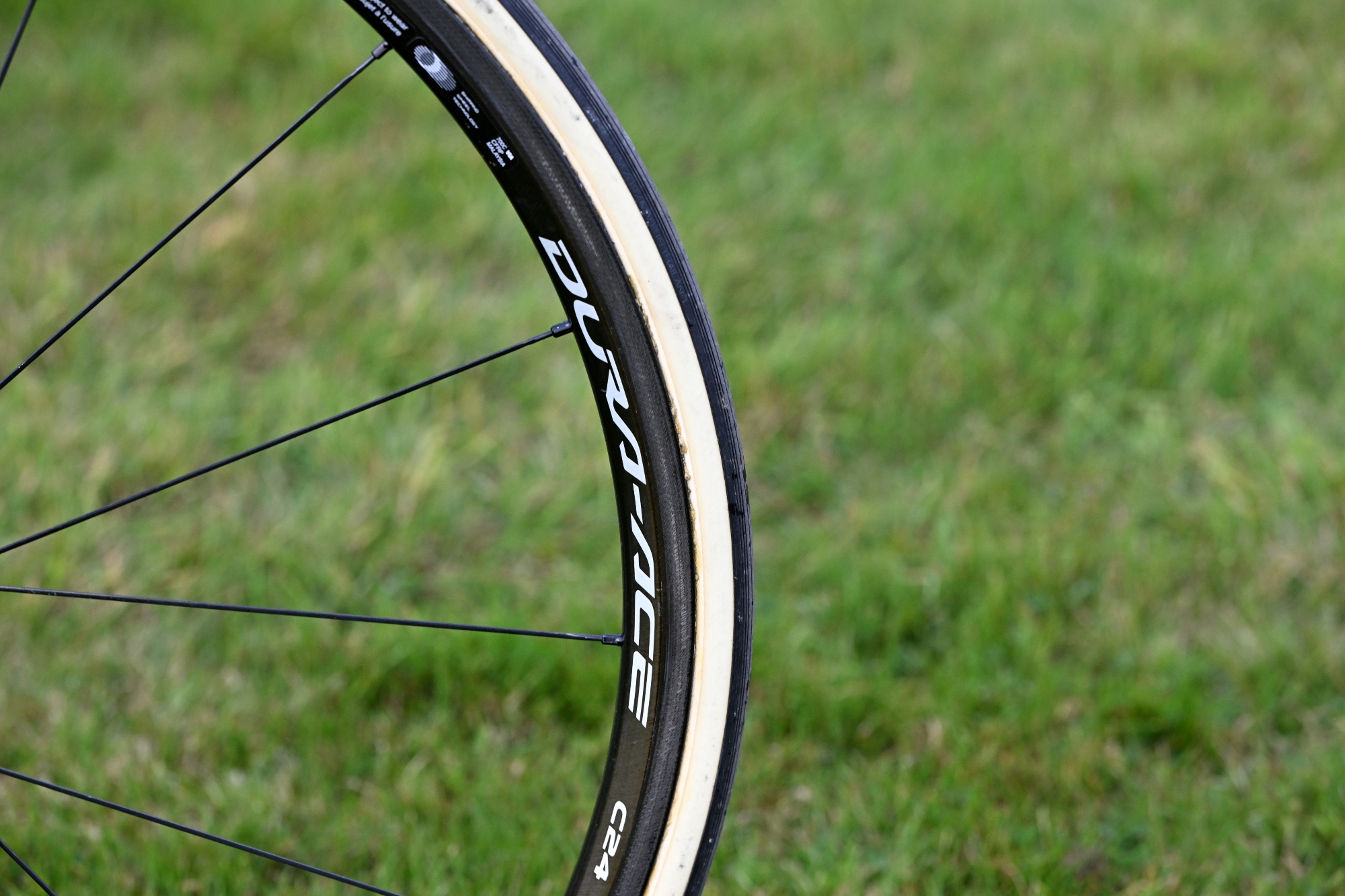
The Dura Ace C24 wheelset, from 2016, is positively new in comparison,
Rolling duties are handled by a blast from the past too, in the form of Shimano's Dura-Ace C24 carbon tubular wheels. Hovering around the 1,100-gram mark, the wheels aren't the lightest you'll find out there today, but still remain competitive in the hill climbing space.
The wheels are shod with ultralight Vittoria Corsa tubular tyres in a narrow, by today's standards, 25mm width.
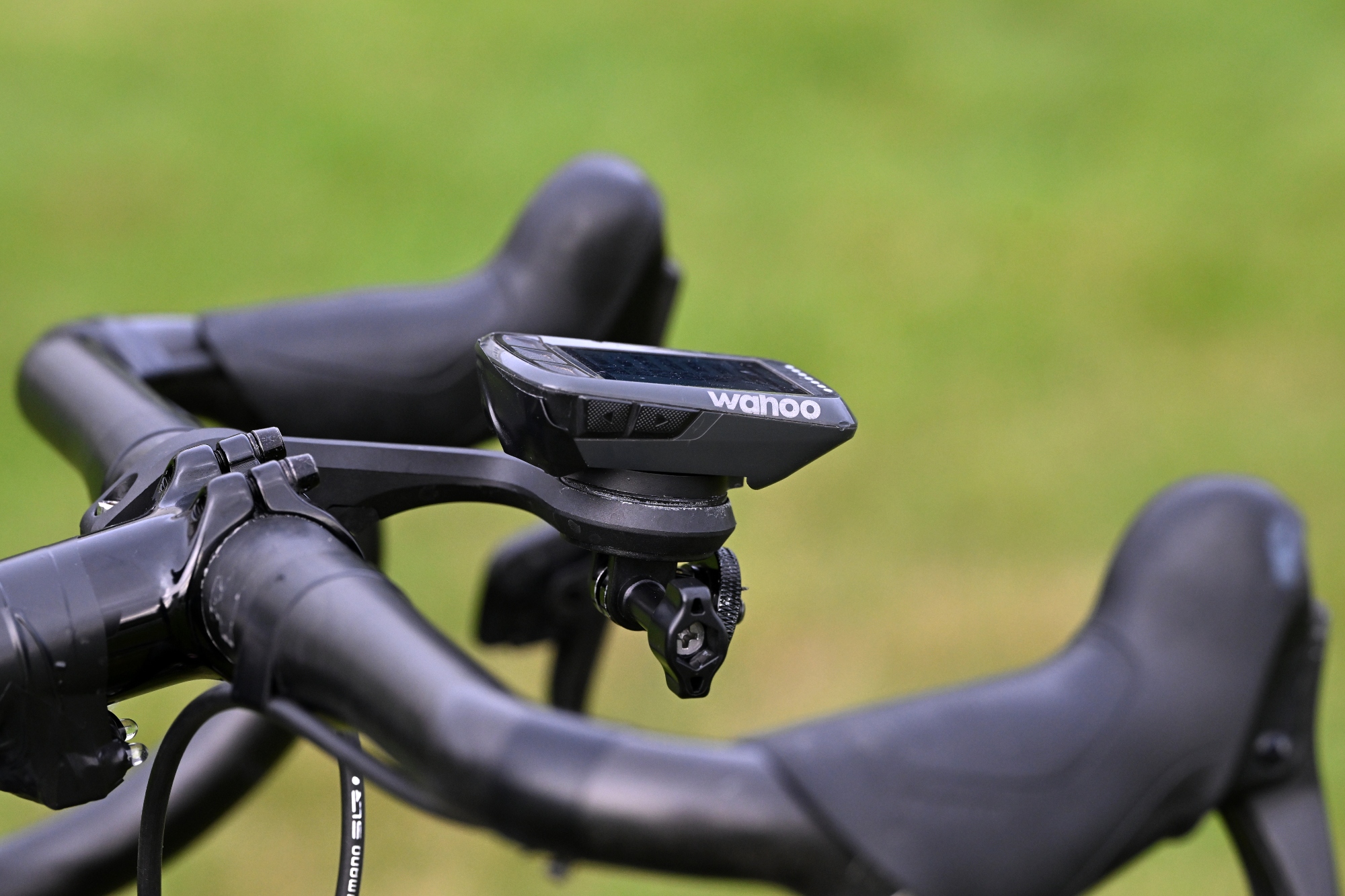
Carbon fibre handlebars are present and correct, though Macfarlane did choose not to chop them down to save an extra few grams
Up front, it becomes abundantly clear that this bike is only built to be ridden for short periods. Macfarlane has forgone the comfort of handlebar tape to save around 50 grams from the carbon fibre cockpit setup. Interestingly Macfarlane still uses an out-front mount, full-size Wahoo Elemnt Bolt cycling computer, and even has a camera mount to record the action - precious grams many would choose to go without.
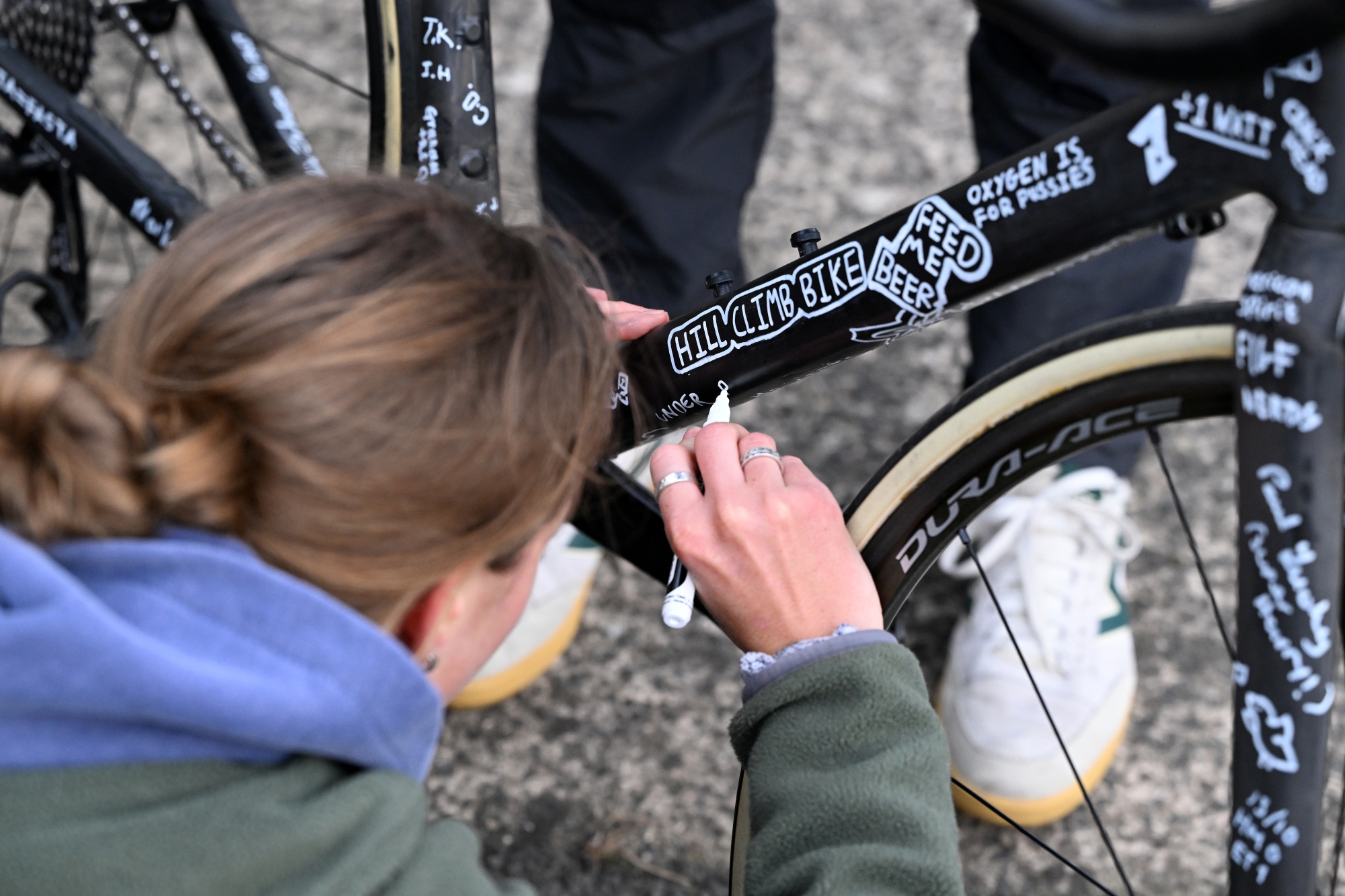
Personal messages from friends and competitors are what makes this build truly special
The party piece of this bike is the custom 'paint job', and the picture above shows how this bike's unique appearance came to fruition.
Macfarlane used a white marker pen to add some rather unique messages, which we presume help to keep morale high while he is deep in the hurt locker. 'Pasta = Fasta' and 'Feed me beer', it must be said, are my personal favourites.
After Macfarlane had finished with the bike, it was then up to the wider hill climb community. Harry told Cycling Weekly that timekeepers, spectators, and riders had all picked up the white marker pen to complete the 'community project' finishing off this rather special machine.

Thank you for reading 20 articles this month* Join now for unlimited access
Enjoy your first month for just £1 / $1 / €1
*Read 5 free articles per month without a subscription

Join now for unlimited access
Try first month for just £1 / $1 / €1
Get The Leadout Newsletter
The latest race content, interviews, features, reviews and expert buying guides, direct to your inbox!

Joe is Cycling Weekly's tech writer. He's always had a love for bikes, since first riding a two wheeled steed before the age of four. Years down the line, Joe began racing at 16, and enjoyed great experiences internationally, racing in Italy, Spain and Belgium to name a few locations. Always interested in tech, Joe even piloted his Frankenstein hill climb bike to a Junior National Title in 2018. After taking a step back from elite level racing in April 2022, Joe joined our team as a freelancer, before becoming Tech Writer in May 2023.
-
 MAAP Aeon Jersey Review: as classy as ever, and built to go the distance
MAAP Aeon Jersey Review: as classy as ever, and built to go the distanceThe MAAP Aeon collection is hardly a value option, but it does provide impressive quality, and a great fit
By Joe Baker
-
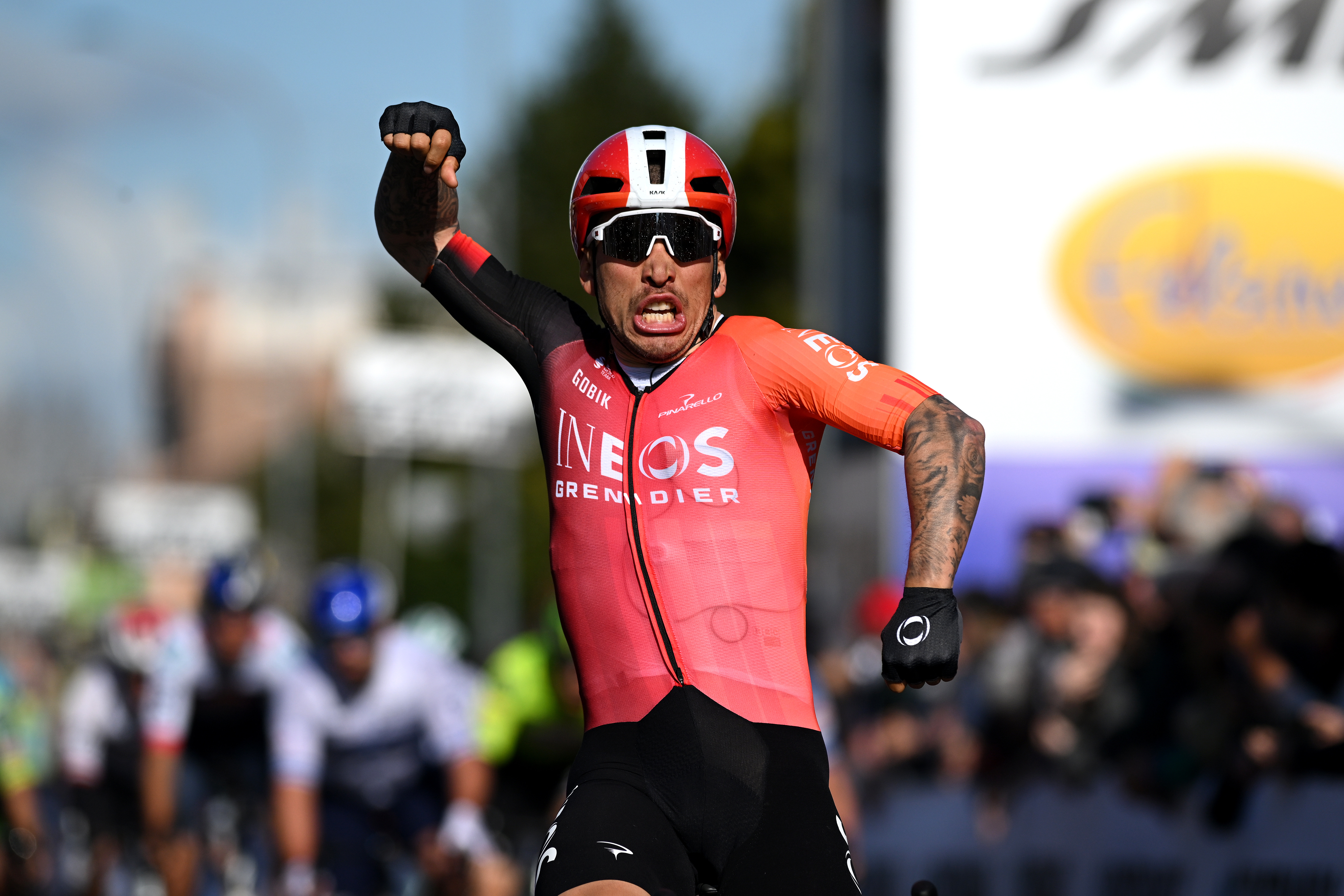 'It can really push me along' - How a velodrome comeback is making Caleb Ewan faster on the road
'It can really push me along' - How a velodrome comeback is making Caleb Ewan faster on the roadAustralian says he'll "definitely" continue track work after rekindling passion
By Tom Davidson